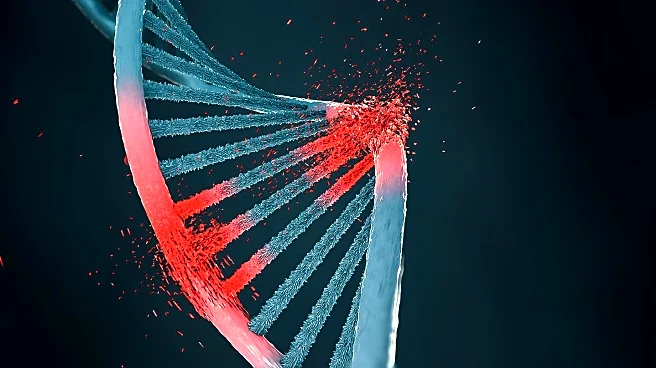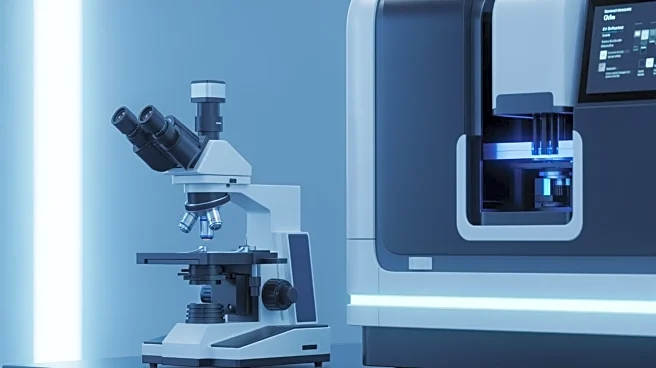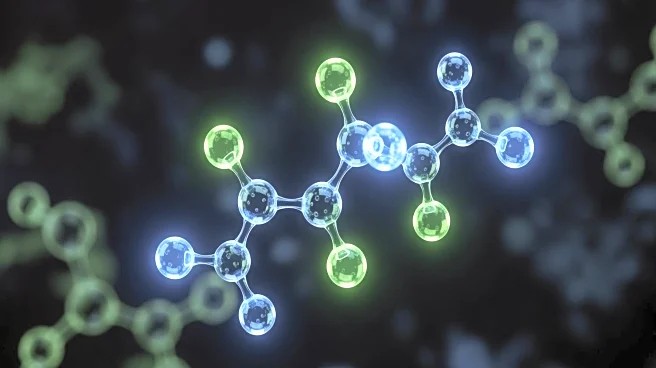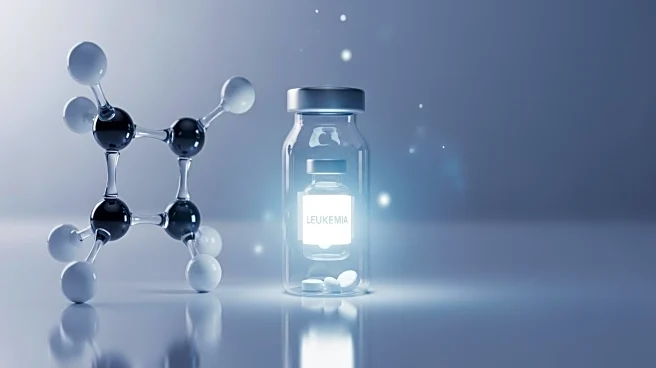What's Happening?
A recent study has assessed the efficacy of shortened venetoclax (VEN) exposure in patients with acute myeloid leukemia (AML) who are treated with a combination of venetoclax and hypomethylating agents
(HMA). This combination is a standard first-line treatment for AML patients who are not eligible for intensive chemotherapy. The study, conducted across eight Austrian hematology centers, involved 184 newly diagnosed AML patients. It aimed to determine whether the duration of VEN administration before response assessment in the first treatment cycle affects the frequency of marrow-complete remission (mCR). The study found no significant difference in mCR rates among patients with varying durations of VEN exposure, suggesting that shorter VEN treatment durations might be sufficient. However, the study also highlighted the limitations of its retrospective design and the need for further research to confirm these findings.
Why It's Important?
The findings of this study could have significant implications for the treatment of AML, particularly in optimizing the duration of venetoclax exposure to minimize myelotoxicity while maintaining efficacy. Shortening the duration of VEN treatment could potentially reduce side effects and improve patient outcomes. This is particularly relevant for patients who are not candidates for intensive chemotherapy, as it offers a less toxic alternative. The study also underscores the importance of early response assessment, which could lead to more personalized treatment adjustments and better management of neutropenic patients. If validated, these findings could influence clinical guidelines and treatment protocols, potentially benefiting a large number of AML patients.
What's Next?
Further research is needed to confirm the sufficiency of shorter VEN durations and to explore the safety and efficacy of reduced upfront VEN dosing. Prospective studies with larger patient cohorts could provide more definitive evidence. Additionally, the study suggests that combining flow cytometry with cytology for early response assessment could improve the accuracy of treatment efficacy evaluations. This approach could be further explored to refine diagnostic protocols and enhance treatment decision-making processes. The potential for earlier therapeutic adjustments based on these assessments could lead to more effective and tailored treatment strategies for AML patients.
Beyond the Headlines
The study raises important considerations about the methods used to assess treatment efficacy in AML patients. The discrepancy in turnaround times between different assessment methods, such as flow cytometry and histology, highlights the need for efficient diagnostic processes. The study suggests that relying on a combination of cytology and flow cytometry could reduce delays and improve treatment outcomes. This approach could also address issues related to sample quality and hemodilution, ensuring more accurate assessments of bone marrow blasts. These insights could lead to improvements in clinical practice and better patient care.











